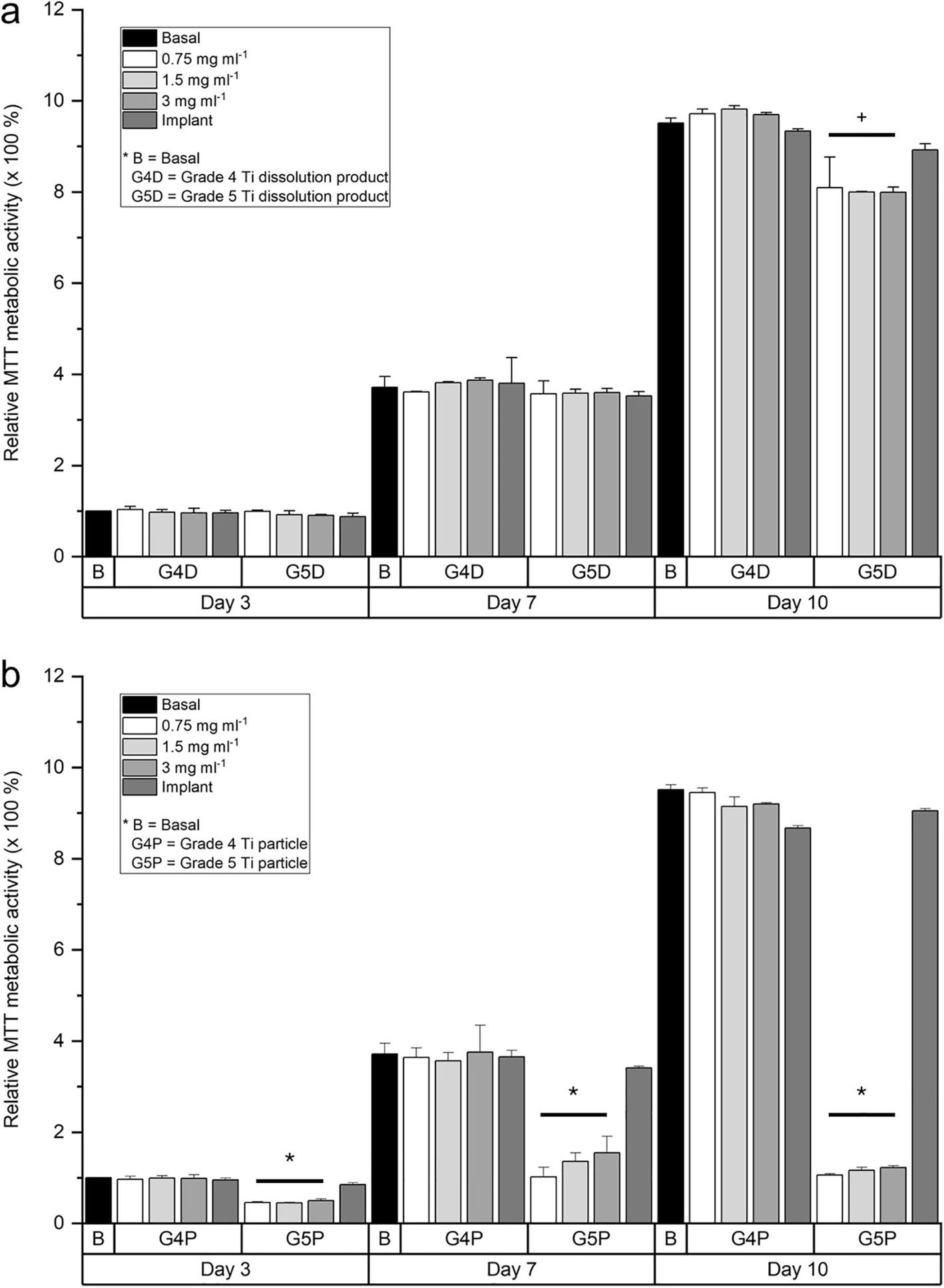Figure 5. The effect of grade 4 and grade 5 implant particles on human gingival fibroblast viability in vitro. Viability was determined using an MTT metabolic activity assay. Cells were exposed to either a dissolution products (ions and nanoparticles) or b culture medium containing suspended implant particles throughout the duration of the culture period. Cells were exposed to various concentrations of particles (0.75, 1.5 or 3 mg ml−1). Basal medium and basal medium containing unprocessed dental implants were used as controls. All results were normalized against the value of basal medium at day 3. Results presented as mean ± standard deviation, n = 3. The asterisk indicates p < 0.05, and + indicates 0.05 < p < 0.1 when compared to basal medium control at each time point.
Figure 5. The effect of grade 4 and grade 5 implant particles
author: Fadi N Barrak, Siwei Li, Albert M Muntane Julian R Jones | publisher: drg. Andreas Tjandra, Sp. Perio, FISID

Serial posts:
- Particle release from implantoplasty of dental implants and impact on cells
- Background : Particle release from implantoplasty of dental implants (1)
- Background : Particle release from implantoplasty of dental implants (2)
- Materials & methods : Particle release from implantoplasty of dental implants (1)
- Materials & methods : Particle release from implantoplasty of dental implants (2)
- Materials & methods : Particle release from implantoplasty of dental implants (3)
- Results : Particle release from implantoplasty of dental implants
- Discussion : Particle release from implantoplasty of dental implants (1)
- Discussion : Particle release from implantoplasty of dental implants (2)
- Discussion : Particle release from implantoplasty of dental implants (3)
- Discussion : Particle release from implantoplasty of dental implants (4)
- Figure 1. Representative photo of implants and SEM images of particles
- Figure 2. EDX spectra of particles produced by the mock implantoplasty procedure
- Figure 3. Titanium (Ti) and vanadium (V) release from the particles
- Figure 4. Titanium (Ti) and vanadium (V) content in DMEM
- Figure 5. The effect of grade 4 and grade 5 implant particles